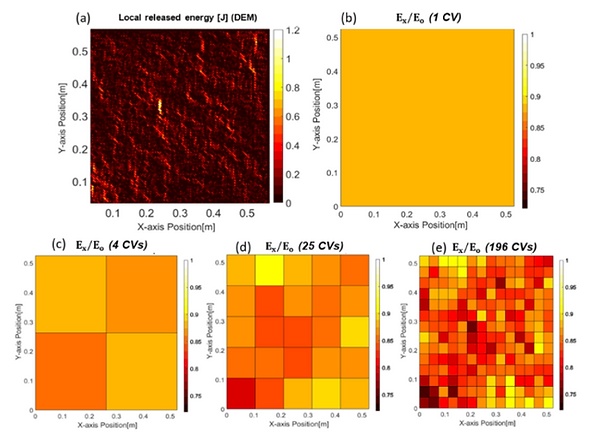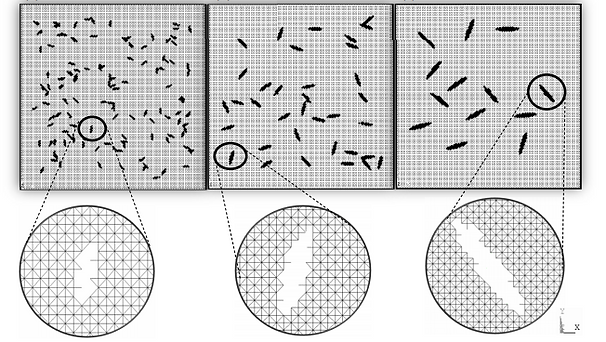Damage fatigue simulation in quasi-brittle material using a version of discrete element method

The simulation of the damage process is a challenge for researchers nowadays. In ductile materials, the continuum damage mechanics is based on the plasticity framework, but quasi-fragile materials have some characteristic phenomena such as localization and size effects, among others, that cannot be taken into account with this approach. The discrete element method has demonstrated considerable success in simulating the damage process in this kind of material. One of the advantages of this approach consists of capturing the transition between continuum and cracked regions in a natural way. In the first part of this work, extensive validation of the proposed numerical method is done, where fissures are introduced in a lattice structure. The variations of the mechanical properties are evaluated and compared to the analytical responses based on continuum damage theory. In the second part, an application considering the damaging process due to cyclic load history simulates a fatigue process with special attention on the transition between the continuum to macro-cracks nucleation. Finally, in the framework of quasi-brittle materials, a discussion about the performance of this approach in quantifying damage is presented.
Continuum Damage Evalaution and Homogenization Process in Quasi-Fragile Materials Simulated using a Lattice Discrete Element Method

Knowing, predicting and modifying how the structure reaches the collapse is an engineering challenge and also a technological key for the development of structures. Among the materials, those with ductile behavior, as metals, are evaluated considering the damage process within the plasticity theory framework and, in this case, the hypothesis of a continuum medium is accepted up to a certain degree of deterioration. For quasi-fragile materials, such as ceramics, some types of ground stones and concrete, the hypothesis applied in ductile materials models is, at the very least, questionable when the damage level is high. In this situation, singular phenomena like the localization, interaction between the microcracks clusters, scale effect, among others, can happen. It is of interest to relate continuum mechanics results with theories that allow the material to present a set of interactive and growing discontinuities. Notably, the application of methods based on discontinuous mechanics has presented promising results. In this scenario, the domain is represented by nodes bounded with each other through interacting functions based on field forces. These methods permit to incorporate the damage and/or the fracture naturally. Firstly, in the present dissertation, a version of the discrete element method is applied to simulate discontinuous fields with a known analytical solution in the context of the continuum damage mechanics. The parameters conventionally applied in continuum mechanics and the concepts of micromechanics are incorporated to allow comparisons between the known analytical (continuum mechanics) and the extracted numerical approach (discrete model). The effect caused by the number of cracks and their corresponding sizes is also studied. In the second application, the discrete model is submitted to progressive damage due to proportional and nonproportional cyclic loading, allowing to discuss and evaluate how the material properties degenerate over time. Lastly, a scenario showing the effect of the domain’s subdivision is made to visualize the associated error while performing this type of analysis. Many observations made during this work permit to verify not only the validity of the methodology but also to interpret the obtained results in the frameworks of the continuous damage mechanics and fracture/damage mechanics.
